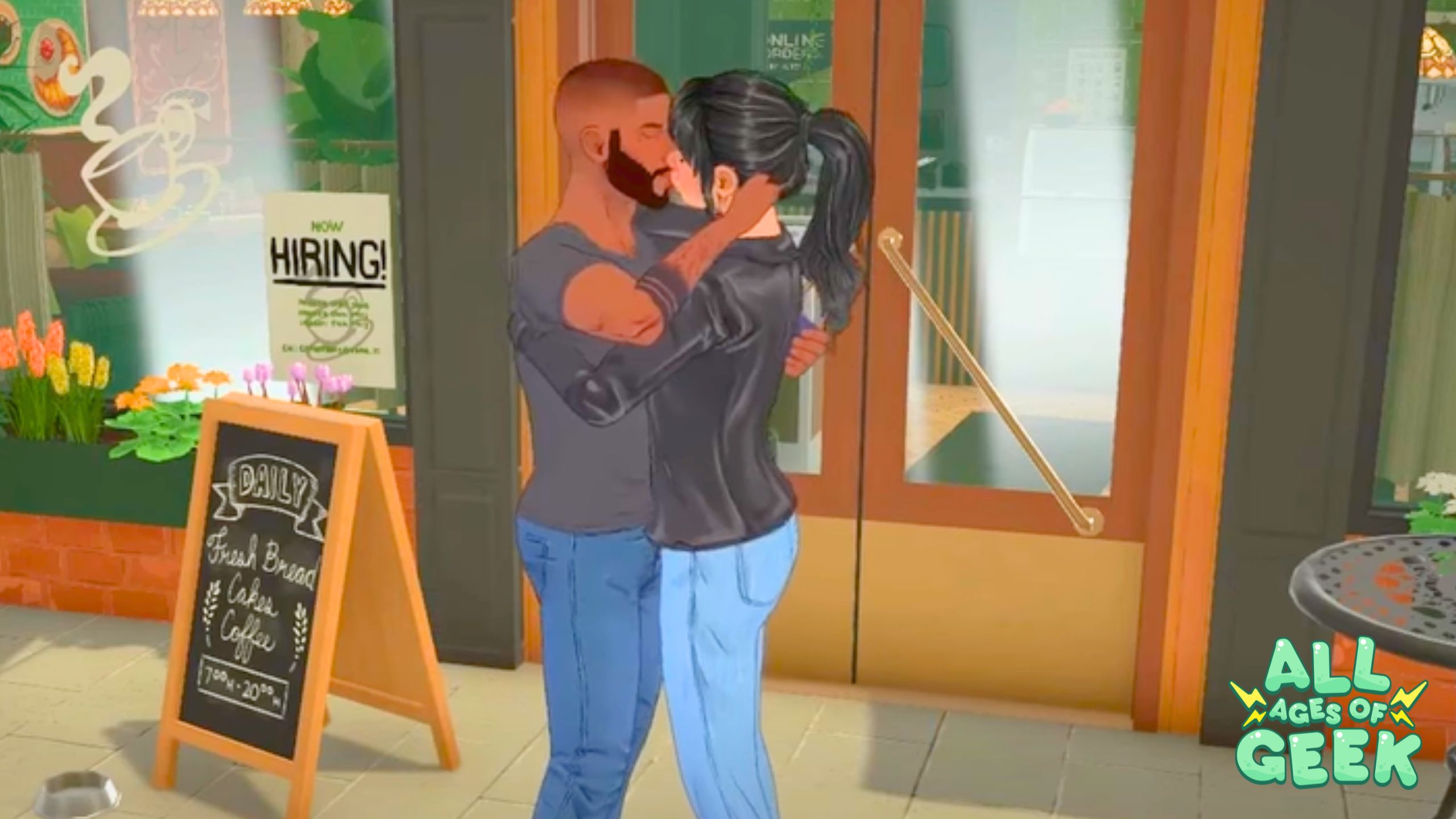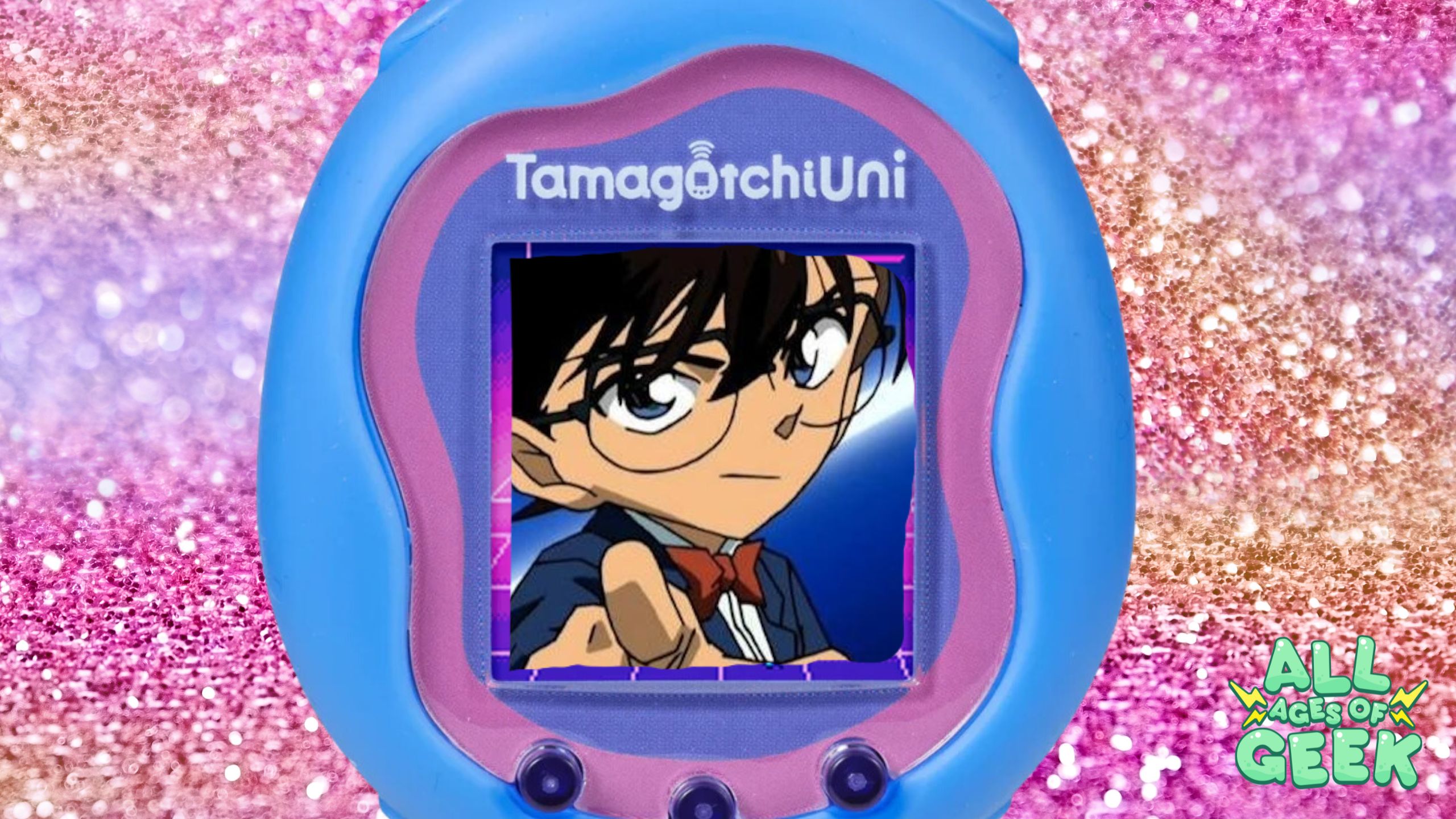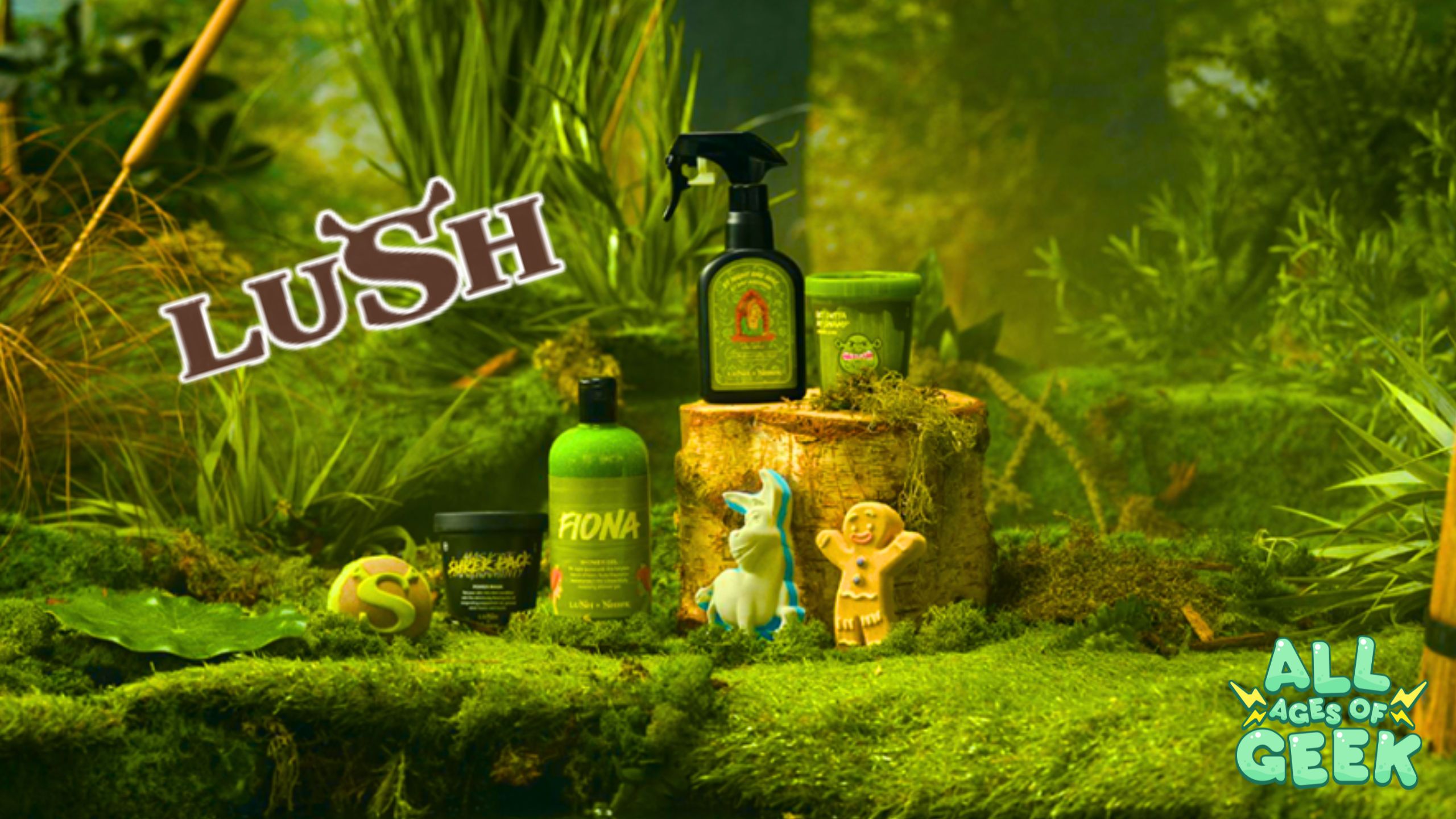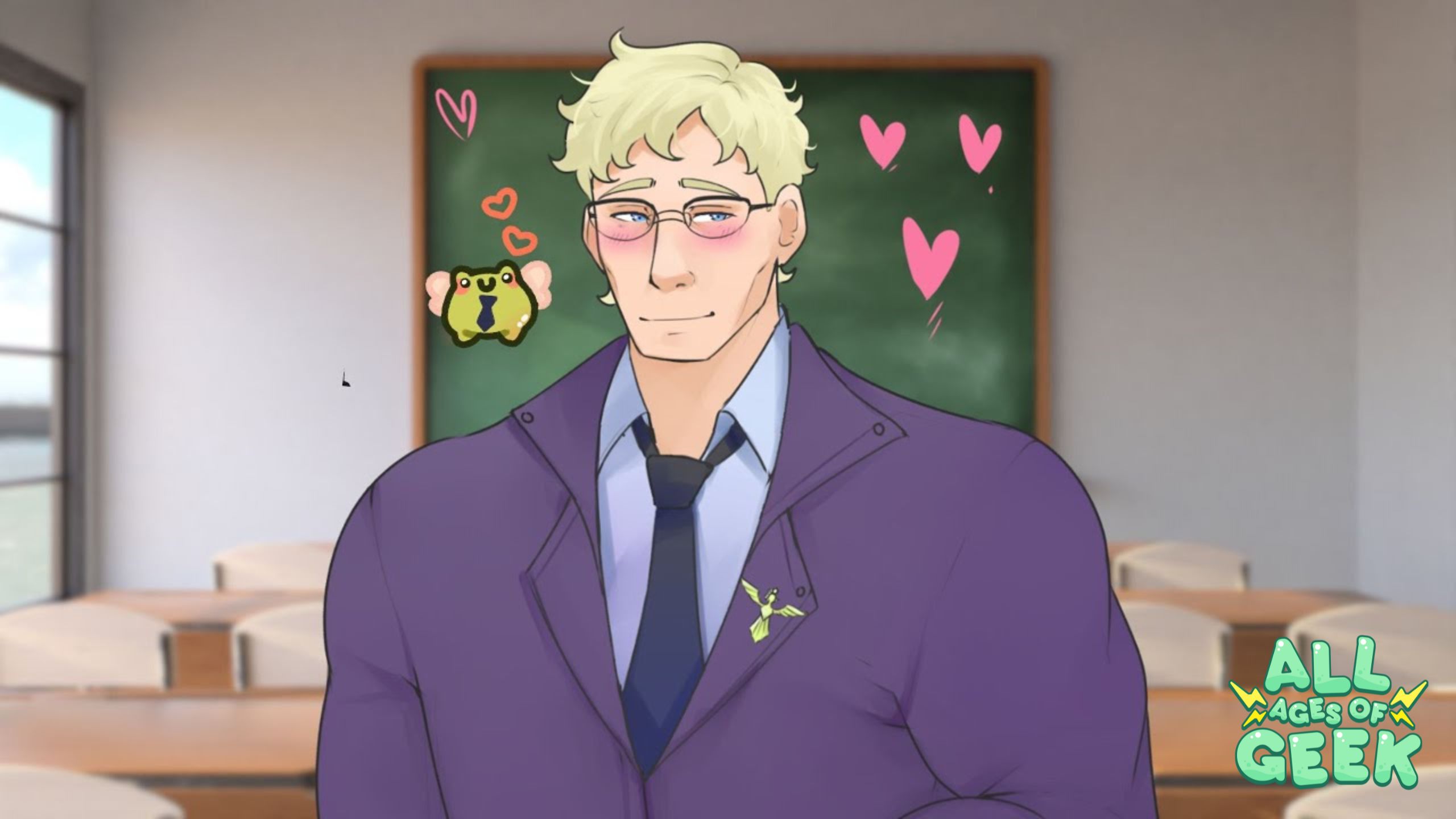Interview with Lomcia creator of “Laos Chronicles” – All Ages of Geek Tapas Reviews:
Welcome to another enthralling episode of interview series “Creator Spotlight” where today, we are honored to have the brilliant mind behind the “Laos Chronicles” with us, Lomcia! As a renowned sci-fi comic book and webcomic artist and writer, Lomcia has been captivating readers with thrilling adventures that whisk them away to uncharted territories. In this interview, we’ll delve into the creative process, explore the themes interwoven throughout these action-packed stories, and discuss the breathtaking art that makes these comics truly unforgettable. So, buckle up and prepare to be transported into the fantastic world of science fiction comics with Lomcia!
A note from Lomcia Creator of “Laos Chronicles”
Welcome to the fantastic world of science fiction comics! As a sci-fi comic book and webcomic artist and writer, I create thrilling adventures that transport readers to exciting new worlds. With alien civilizations, epic space battles, and political intrigue, my comics are packed with excitement and wonder. And I don’t just focus on action and adventure – I also explore themes of family relationships, interstellar romance, and the challenges of growing up in a universe full of possibilities. From futuristic technology to otherworldly landscapes, my sci-fi art will spark your imagination and take you on an unforgettable journey through space and time. Join me and discover the limitless potential of science fiction comics.
What initially sparked your passion for creating comics, and how did that desire evolve into the work you produce today?
To be honest, it all started with Dragon Ball. I was a huge fan of the anime when I was young, and I later discovered that it was based on a comic book or manga created by Akira Toriyama. I was immediately hooked and wanted to learn more. Although I had read comics before, like Smurfs and Lucky Luck, Dragon Ball inspired me to start drawing my own stories.
From there, I became more interested in the world of comics and manga. It was a natural fit for me, as I had always enjoyed drawing and storytelling. Now, as a comic book and manga artist, I continue to draw inspiration from the worlds of sci-fi and fantasy, and I love creating stories that capture the imagination of my readers.
Can you walk us through your journey as a comic creator, starting from the moment you first decided to explore this medium?
When I was a child, I would buy simple notebooks from the shop and fill them with my stories. As I got older, I began taking my passion for drawing more seriously. I invested in better materials, such as high-quality paper and pens, and began drawing in black and white. Once I gained access to a computer, scanner, and internet, I started scanning my work and sharing it online. Unfortunately, my first tablet was of poor quality and broke down quickly. However, when I started working and saving money, I was able to invest in a laptop and a better tablet. I started drawing in Paint Tool SAI, but eventually switched to Manga Studio and then Clip Paint Studio. It’s been quite the journey, but I’m grateful for every step along the way that has led me to where I am now as a professional comic book and manga artist.
Your work touches on various themes and subjects. How do you choose which stories to tell, and what do you hope your readers take away from them?
What sets my comics apart from others is my focus on healthy relationships and family dynamics. While many stories explore toxic relationships and dysfunctional families, I strive to showcase positive examples of partnership and parenting. In my sci-fi comics, I deliberately feature alien main characters to offer a unique perspective on relationships and societal structures. I aim to capture emotions realistically, prioritizing authenticity in my characters’ experiences. My hope is that readers will take away valuable lessons from my stories, particularly in terms of how to cultivate positive relationships with their own families. Communication and respect are key themes that I seek to convey through my work.

What led you to choose Tapas as the platform for sharing your comics, and what aspects of the site do you find most appealing for your work?
While I’ve explored various platforms for hosting my comics, I’ve found that Tapas offers a unique opportunity to earn income for my creative efforts. While it may not be my ultimate destination, the community on the forums and Discord channels is incredibly supportive and welcoming. Compared to other art communities I’ve participated in, Tapas stands out as one of the least toxic. For fellow creators seeking a place to share their work and connect with like-minded individuals, I highly recommend Tapas as a viable option. With its user-friendly interface and revenue-sharing model, it’s a great starting point for artists looking to turn their passion into a profitable venture
Tapas has its own unique features and community. Are there any aspects of the platform that you feel could be improved, or perhaps have been challenging to navigate?
While I appreciate the opportunities that Tapas provides for creators to earn income from their work, I believe there is room for improvement. While genres such as fantasy and LGBTQ+ are understandably popular, I would like to see more attention given to the Drama and Sci-Fi sections to allow for a greater diversity of voices to shine through. Additionally, the site’s search engine can be difficult to navigate, and it would be helpful to have an option to sort search results by publication date. This would prevent the frustration of discovering a promising work that hasn’t been updated in years. Overall, I believe that implementing these changes would enhance the user experience for both creators and readers on the site.

In your opinion, what distinguishes independent comics from mainstream comics, and why do you think the indie scene is important for the overall comic industry?
Independent comics have the freedom to explore topics and perspectives that may not align with mainstream conventions. This can lead to politically incorrect, yet thought-provoking and diverse storytelling, which I find very appealing. The importance of the indie scene lies in its ability to offer alternative perspectives and subject matter that are often overlooked in the mainstream.
As a comic creator, what are some unique storytelling techniques you’ve developed to set your work apart from others in the genre?
I’m not exactly sure what sets my artwork apart, but many readers have commented on how I am able to convey emotions and expressions effectively. I believe this allows readers to connect with the characters on a deeper level and enhances the overall storytelling experience
Apart from your comics, what other avenues do you explore to engage with your audience, such as social media, live events, or merchandise?
I mainly connect with other artists through Discord groups. There are countless artistic communities on Discord, and I try to be active in as many as I can. However, my main platform is Instagram, where I have built a significant following. While I enjoy using TikTok, I’m still figuring out how to navigate it effectively. Recently, I’ve started attending comic conventions, and I’m planning to become an exhibitor myself.
Creating comics can be both rewarding and challenging. Can you share some of the struggles you’ve faced along the way, and how you’ve overcome them?
As a busy parent and artist, time management is key. One strategy is to set aside specific blocks of time for drawing, perhaps early in the morning or after the child goes to bed. Another option could be to enlist the help of a babysitter or family member to watch the child for a few hours to allow for uninterrupted drawing time. In terms of backgrounds, there are various resources available online such as tutorials, reference images, and even pre-made 3D models that can assist in creating backgrounds. Practice and experimentation can also help improve skills in this area. Don’t be afraid to take your time and work on backgrounds gradually as you develop your skills.

Are there any comic creators, artists, or writers who have been particularly influential or inspiring to you? How have they shaped your creative journey?
I’ve had the pleasure of encountering many talented artists throughout my career, but there are a few who have left a lasting impression on me. One group that has greatly inspired me is Clamp, whose exceptional writing in the romance genre has captivated me as a fan. As someone who loves writing romance myself, their work has been a major influence on my own creative endeavors.In addition to well-known artists like Clamp, I must also express my gratitude towards some of the freelancers who have helped me along the way, particularly those I’ve met through publishing on the Tapas platform. Their support and guidance have been invaluable to me and I’ll always be grateful for their contributions to my growth as an artist.
For aspiring comic creators, what are some practical tips and advice you would give to help them find their own voice and style?
In my experience, perseverance is key. Negative criticism can be tough to take, but it’s important to remember that it’s an opportunity to improve and prove your doubters wrong. As for developing your own artistic style, I’ve found that studying the work of your favorite artists and blending various techniques can be a helpful approach. Ultimately, finding your unique style is a journey of trial and error, but it’s worth the effort.

Can you tell us about your creative process, from brainstorming ideas to the final execution of your comics? How do you stay motivated and consistent throughout?
I would recommend finding a small group of like-minded individuals who also create comics. These groups can be a great source of motivation and inspiration. Even when you don’t feel like drawing, seeing others in the group working on their own projects can give you the push you need to keep going. Just make sure the group is one you trust and feel comfortable with, as they can become a valuable support network.
How do you balance the creative and business aspects of being an independent comic creator, such as promoting your work and managing finances?
Handling money as an independent comic artist can be challenging, and I personally struggle with it. However, with the support of my family, we manage to make ends meet. It’s not easy, but it’s worth it to pursue my passion for creating comics.
Funding creative projects can be challenging for many artists. What strategies have you employed to fund your comics, and are there any resources you’d recommend to other creators?
When I first started considering printing my comic book, I was worried about the cost. However, after doing some research and reaching out to some local printers, I realized that it wasn’t as expensive as I had originally thought. I found a printer who was willing to work with me on a small run of copies at a reasonable price. The real challenge came in promoting and selling the comic book. I tried using on-demand printing and selling platforms, but the percentage they took was quite high. Eventually, I decided to invest in opening my own online shop and promoting my work through social media and conventions. It’s been a challenging journey, but I’m glad I took the leap and invested in myself and my work.
How do you stay updated on the latest trends and developments in the comic industry, and how do you integrate this knowledge into your work?
Depends. It varies for me. I tend to create comics that cater more towards adult audiences rather than young people. While I do attempt to incorporate certain trends into my work, not all of them resonate with me. Therefore, I aim to focus more on independent creators since their unique perspectives and stories resonate more with me than those in the mainstream.
In what ways do you believe the comic industry is evolving, and what opportunities do you see for independent creators in the future?
In my opinion, the comic industry seems to be stagnant and somewhat limited by political correctness. While there are a few comics that push beyond the traditional boundaries, there’s still a lot of room for growth and diversity. As an independent creator, I’ve faced challenges trying to break into the mainstream, but I believe that with persistence and the support of like-minded individuals, change is possible. Let’s continue to work together and push for positive change in the industry.
Collaboration can be an essential part of the creative process. Have you worked with other creators or artists on projects, and if so, how have those experiences shaped your work?
Collaborating with other creators can be a mixed experience, depending on who you work with. In my own experience, I’ve had the chance to create short comics with other creators, and some have been very supportive, while others have been more demanding and difficult to work with. However, regardless of the experience, collaborating has taught me valuable teamwork skills. Currently, I continue to collaborate with two artists, and one of them also publishes on the Tapas platform.
What are some personal or professional goals you have for your comic career, and how do you plan to achieve them in the coming years?
My personal goal is to publish my own comic book, which I hope to achieve by May if everything goes well. While I don’t necessarily need to become hugely popular, I do hope to earn enough to cover my expenses. Additionally, I have aspirations of being an exhibitor at comic conventions like Comicon, and eventually opening my own shop to sell my comics. As I progress in my career, perhaps I’ll have the opportunity to explore even more exciting opportunities.
As a creator, how do you measure success, and what achievements are you most proud of so far?
I am pleased with the feedback I receive online, as people often associate my nickname with some of my comics. It’s a nice feeling to know that my work is being recognized. However, what makes me most proud are my finished comics. At the end of the day, that’s what matters most to me.

Lastly, could you share an anecdote or experience from your comic-creating journey that has had a profound impact on you, and what did you learn from it?
It’s important to remember that not everyone who claims to be your friend and offer help is truly genuine. In the artistic world, I’ve encountered individuals who appeared to be supportive but turned out to be quite the opposite. It’s taught me the value of choosing my friends more carefully. Surrounding yourself with good, faithful, and honest people can make overcoming various challenges much easier. Always remember that a solid support system is key in any industry, especially in the arts.
And there you have it, folks! We hope you’ve enjoyed this incredible journey through the boundless universe of science fiction comics with the talented Lomcia, the creator of “Laos Chronicles.” It’s always fascinating to explore the creative process behind such captivating stories, and today’s conversation has given us a unique insight into the inspiration and passion that drives Lomcia’s work. From epic space battles and alien civilizations to the heartfelt exploration of family relationships and interstellar romance, Lomcia’s stories truly offer something for everyone. Thank you for joining us, and be sure to check out “Laos Chronicles” for your next thrilling adventure!
Social
https://www.tiktok.com/@princesslomcia
https://www.instagram.com/lomcia_princess/
https://www.patreon.com/lomcia89
About Stec Studio, All Ages of Geek and “I Married a Monster on a Hill”
Stec Studio is a New Jersey-based company founded and run by by the Stec Sisters. We specialize in producing interactive comics and novels based on All Ages of Geek media, as well as creating a fully open world Boys Love Universe called BLU Media. This universe is being built from various media forms, including readable media, games, and animations.
Our main series, I Married a Monster on a Hill, is a WEBTOON that tells the story of a retired knight who falls in love with a half-monster. We are also developing an in-production visual novel called I Married a Monster on a Hill: Dates, along with an upcoming Wattpad Exclusive set in the same Universe. At Stec Studio, our goal is to create content that gives people hope and light, and we hope our stories can provide joy and entertainment to all who experience them.










